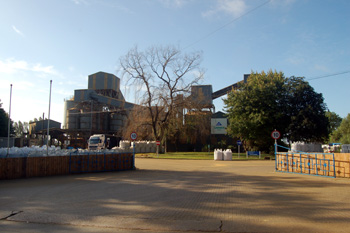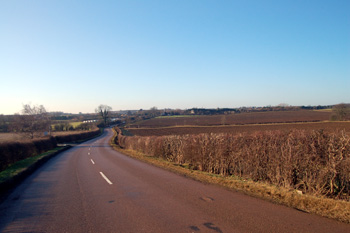Roman Heath and Reach

WBB Minerals sand pit north of Eastern Way June 2008
It would not be surprising to find Romano-British occupation in Heath & Reach which, after all, has as one of its boundaries the Roman Road later known as Watling Street, now the A5. The best evidence for occupation comes from Overend Green. Richard Hagen reported in The Bedfordshire Archaeological Journal Volume 6 of 1971 (pages 71 to 72) that a Roman well had been excavated at Double Arches Pit on land of Overend Green Farm. The excavation was prompted by Roman artefacts turning up in quarrying at the pit by J.Arnold & Sons. The dig was carried out by Jack Griffin of Leighton Buzzard with the help of the Leighton Buzzard Methodist Men's Forum. The well was originally twelve feet deep (the top seven feet had already been stripped off by a mechanical digger during the process of quarrying) and three feet six inches in diameter, lined with rubble. A number of pieces of pottery were recovered from the well [NMR 346528]. The amount of material found in the hundred and fifty years or so of excavation in the area of the Double Arches pit indicates there may have been a good sized settlement there during the Romano-British period.

George Garside - Double Arches Pit south of Eastern Way June 2008
Other Romano-British finds in Heath & Reach include Roman pottery found in the sand quarry south of Eastern Way, opposite the Double Arches pit in 1950 [NMR346520] and Roman pottery including a quern for grinding corn found by Manshead Archaeological Society in 1970 west of the A5 between Eastern Way and Sandhouse Lane [NMR 346526]. A further Romano-British quern was found in 1974 in a sand pit between Shenley Hill Road and Eastern Way [NMR 346528]. A possible kiln site was identified by Wolverton & District Archaeological Society in 1967 from pottery debris and a Roman coin between Overend Green and the A5 [NMR 346533].

View to Overend Green from Fourne Hill December 2008
All the known Romano-British settlement in the area including Linslade and Leighton Buzzard seems to have been on the higher ground, often close to springs. Early 20th century antiquarian Frederick G.Gurney, in his notebooks [X325], describes this fact and states that he deliberately field walked lower lying areas but could find no material in these areas.